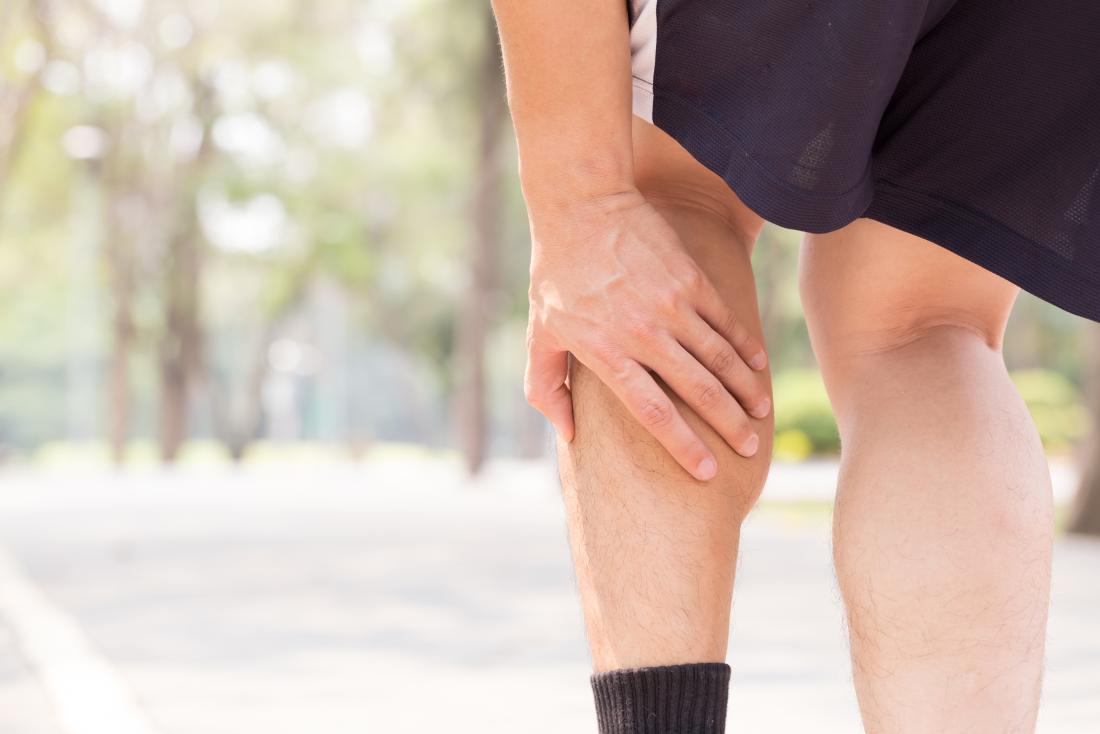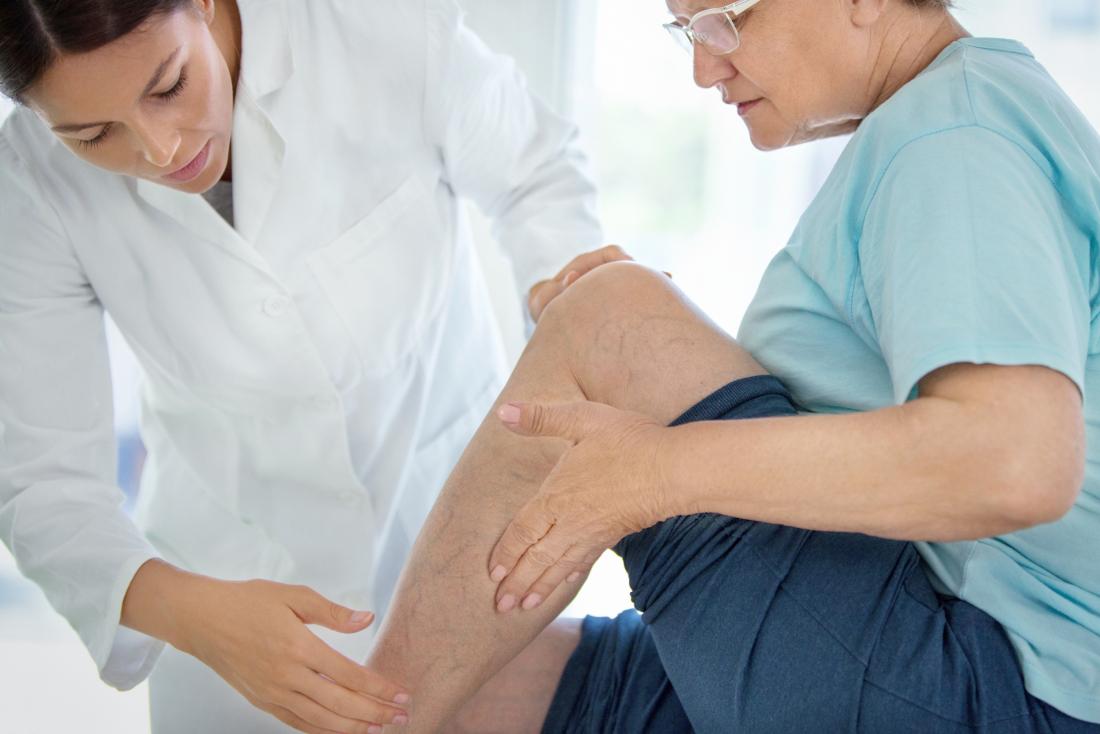Continued Pain in My Lower Leg
Calf pain can be a mild nuisance or be severe enough to prevent a person from walking.
There are a variety of conditions that can affect the calf muscles, as well as the blood vessels and other structures around it. Fortunately, many of the causes of calf pain are easily treatable.
A variety of conditions and situations can cause calf pain, including:
1. Muscle cramp

Muscle cramps in the calf are a common complaint for those who exercise frequently.
Calf muscle cramps are usually temporary but can cause significant pain and discomfort.
Causes of calf muscle cramps include:
- dehydration
- a loss of electrolytes through sweating
- lack of stretching
- prolonged physical activity
- weak muscles
2. Muscle strain
A calf muscle strain occurs when the muscle fibers in the calf tear either partially or completely.
The symptoms will vary depending on the severity of the strain, but most people will experience sudden, sharp pain and tenderness at the calf muscle site.
3. Arterial claudication
A person may experience calf pain due to narrowing or blockages in the arteries that supply blood flow to the legs. This is known as arterial claudication.
Arterial claudication may cause pain while walking, as this movement requires blood to flow to the lower legs.
If the blood has difficulty moving due to narrowing (claudication), a person may experience calf pain.
A person with arterial claudication will experience no discomfort at rest, but pain after a few minutes of walking.
4. Neurogenic claudication
Neurogenic claudication occurs when the nerves that go to the legs are pinched, affecting their ability to communicate with the lower legs.
Neurogenic claudication is often due to a condition called spinal stenosis.This condition occurs when the bones in the spinal column narrow, placing extra pressure on the nerves. Sciatica is one example of neurogenic claudication.
In addition to calf pain, neurogenic claudication symptoms include:
- pain while walking
- pain after prolonged standing
- pain that also occurs in the thighs, lower back, or buttocks
- pain that usually improves when a person leans forward at the waist
A person may also experience calf pain from neurogenic claudication when at rest.
5. Achilles tendinitis
The Achilles tendon is a tough, fibrous band that connects the calf muscle to the heel bone.
If a person's calf muscles are especially tight, this may put extra pressure on the Achilles tendon. As a result, a person can experience calf pain.
People are more likely to experience Achilles tendinitis if they have recently started an exercise program or they perform repetitive exercises.
Frequent stretching can often help to reduce symptoms.
6. Compartment syndrome

Persistent pain in the calf should be addressed by a doctor.
Compartment syndrome is a painful condition that can occur in the calf muscle or in both legs, usually after a person has experienced a trauma or severe injury.
It occurs when excess blood or fluid builds up underneath a band of tough tissues in the body that cannot stretch very well. This fluid places extra pressure on the nerves and blood vessels in the lower leg, causing pain, swelling, numbness, and tingling.
Another form of compartment syndrome is chronic or exertional compartment syndrome. This type occurs when a person experiences pain while exercising.
Symptoms associated with chronic compartment syndrome include numbness, visible bulging or enlarging of muscles, or trouble moving the foot.
7. Diabetic neuropathy
Diabetic neuropathy is a condition that occurs when a person experiences nerve damage related to diabetes.
Frequently high blood sugar levels can damage the body's nerves, usually beginning with the hands and feet.
Sometimes, the tingling and numbness can cause shooting pain and discomfort that radiates to the calf muscles.
8. Plantar fasciitis
Plantar fasciitis is a condition that affects the plantar fascia tissue located on the bottom of the foot.
If the calf muscles are too tight, a person may be more likely to experience plantar fascia because the calf muscles cannot support the foot.
The most common symptoms of plantar fasciitis are foot pain when waking and difficulty flexing the foot.
9. Varicose veins
Varicose veins are enlarged veins that often bulge from the legs and may look like cords. They develop when damaged valves in a person's veins allow blood to backflow.
Factors that contribute to varicose veins include:
- age
- a family history of varicose veins
- hormone fluctuations
- pregnancy
- obesity
- lack of physical activity
Varicose most commonly appear in the legs and can cause pain, throbbing, cramping, and aching.
10. Deep vein thrombosis
Deep vein thrombosis (DVT) is the result of a blood clot that forms in one of the veins in the leg. This condition can cause severe pain and affect blood flow to the legs.
People are more likely to develop DVT if they have been sitting for long periods, such as on a flight, or if they have high blood pressure or blood clotting disorders.
Symptoms of DVT include calf pain that usually gets worse when standing or walking. A person's leg may also swell and have a red or inflamed area due to the problems with blood flow.
Treatment for calf pain will depend on the underlying cause.
People can treat calf pain that is the result of injury or overuse using the PRICE method. This stands for:
- Protection: Apply a cloth bandage, splint, or immobilizer to the foot, ankle, or calf to protect the injury and allow the muscles to rest.
- Rest: Avoid using the calf muscle more than necessary.
- Ice: Apply a cloth-covered ice pack for 10 to 15 minutes at a time to help reduce inflammation. Ice packs are available to buy in pharmacies and online.
- Compression: Wrap the calf in a stretchy, tight bandage or wear a compression stocking to reduce swelling.
- Elevation: Elevate the leg on pillows to help promote circulation and reduce swelling.
Other causes of calf pain may be treated with medications or other medical procedures, depending on the underlying cause.
Warming up by walking at a moderate pace before engaging in more intense exercise can help to prevent muscle strain injuries.
In addition to these measures, a person may also choose to do some gentle stretching to reduce muscle tightness after exercise.
A person should always check with their doctor before beginning a stretching routine to ensure the stretches will not aggravate an injury.
Useful stretches for calf pain include:
Stretching after exercising may also help to prevent muscle tightness and discomfort.
A person should seek emergency medical treatment if they suspect they have DVT. The symptoms of DVT include pain, swelling, and warmth in one leg.
Other signs a person should seek emergency treatment for calf pain include:
- fever that is greater than 100°F
- swollen leg that is pale or cool to the touch
- sudden extreme swelling in the legs
Some causes of calf pain warrant a trip to the doctor's office during regular business hours. These include:
- pain while walking
- unexplained leg swelling
- varicose veins that are very painful
- symptoms that do not get better after a few days of at-home care
If a person has concerns about bothersome or ongoing calf pain, making an appointment to see a doctor can help provide peace of mind.
A doctor will carry out a physical examination to determine whether a pulled or strained muscle is the problem.
If the doctor finds that the issue is more severe, they may order a musculoskeletal ultrasound scan. An ultrasound would be able to identify the following:
- arterial claudication
- Achilles tendinitis
- diabetic neuropathy
- plantar fascia
- deep vein thrombosis
A musculoskeletal ultrasound can also provide guidance regarding injection therapy.
Read the article in Spanish.
Source: https://www.medicalnewstoday.com/articles/321446
0 Response to "Continued Pain in My Lower Leg"
Post a Comment